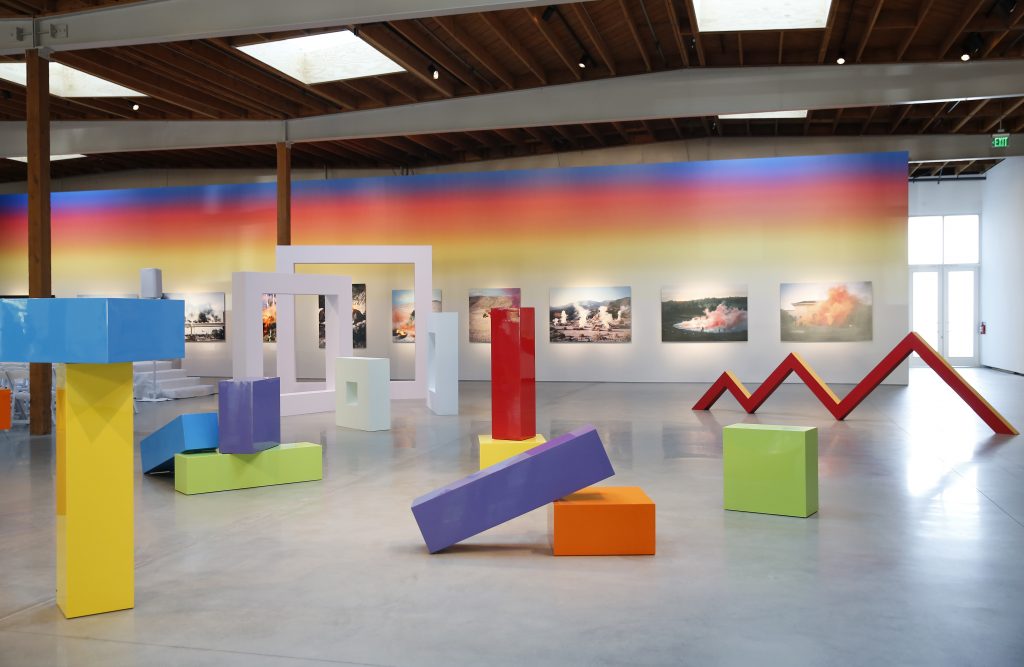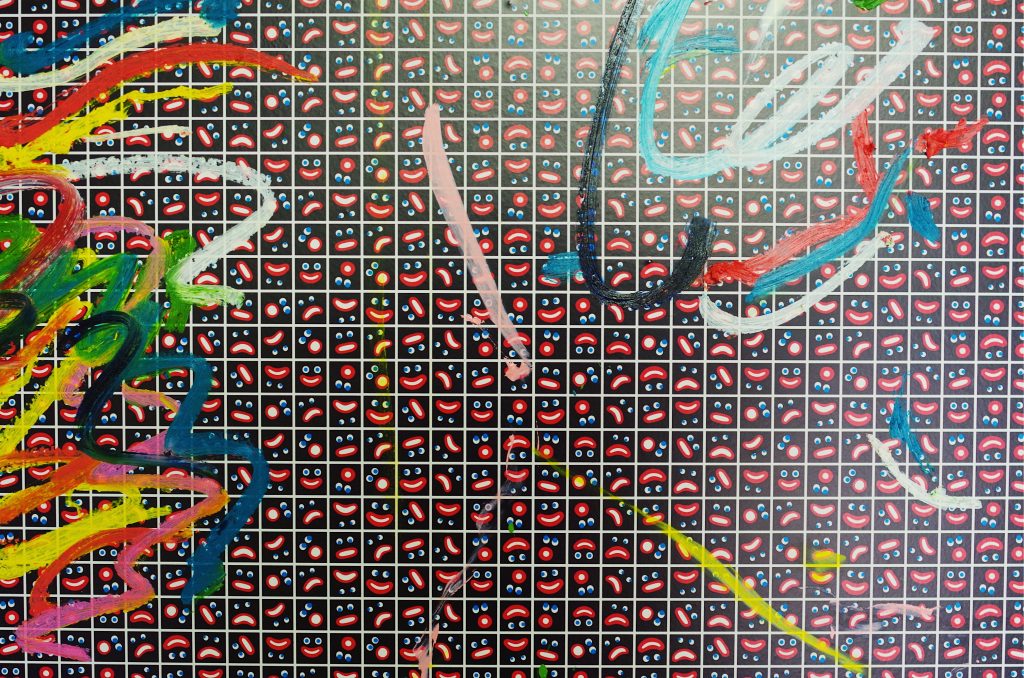“Judy Chicago: Los Angeles” at Jeffery Deitch
An exploration of the feminist artist’s time making, teaching and exhibiting in California

Vibrant shapes and colors created by Judy Chicago fill LA’s Jeffrey Deitch gallery, with its massive wooden bow truss ceiling. The beloved feminist artist produced these colorful paintings, drawings and sculptures between the ’50s and the ’70s—and the show Judy Chicago: Los Angeles celebrates the path that she forged in California. This includes founding the Feminist Art Program at California Institute of Arts to revisiting seminal work she made and exhibited in LA.

During the recent Visionary Women salon, set up in the middle of the gallery, Chicago explains to fellow artist Andrea Bowman and Hammer Museum chief curator Connie Butler why she often works with such appealing and bold colors. “When art is so incredibly visually gorgeous,” says Chicago. “It allows people time to think about what is being said in the piece.” Chicago looks across the gallery. There, surrounded by a survey of the bold and vibrant art, her thesis rings true. The room is filled with vivid hues that depict the social issues that have been on Chicago’s (and our collective) mind for decades.

The exhibit places examples of several of Chicago’s series side by side. Three panels of “Pasadena Lifesavers” hang near “Rearrangeable Rainbow Blocks,” while various “Iridescent Domes” sit on tables near the wall where her “Car Hoods” sculptures hang. “10 Part Cylinders” anchors the North East section of the gallery, and opposite “Rainbow Pickett” leans against the wall. Major sculptural works “Trinity” and “Zig Zag” sit in the middle of the light-filled space, allowing viewers to observe them from every angle. Archival prints from her “Women” and “Smoke” series flank the length of the back wall.

During the conversation, Chicago recounts how inhospitable the mainstream art community was for women during the ’60s. When asked if she is bitter about the many years her work was undervalued and overlooked, she smiles widely, “No!” Rather, Chicago feels that time actually provided her the chance to develop innovative work and launch the Feminist Art Program (first at Fresno State before she moved it to Cal Arts). There, she supported women artists who worked with small budgets and created work with enthusiasm and passion—and continued to do so, long after her time at the university.

Looking back at these early works—displayed together—tells the origin of Chicago’s artistic journey and how it eventually led to worldwide acclaim. In the mid ’70s, she created her celebrated “The Dinner Party” (now permanently displayed at the Brooklyn Museum) which quickly became a sensation and a controversy, eclipsing the attention for any of her previous works. This depiction of famous women through the ages established Chicago as a pioneer of the feminist art movement.

From the very beginning, Chicago challenged the male-dominated art world. By examining women throughout history, she would shine a light on their significance and connect female voices and accomplishments across generations. That said, Chicago’s work addresses more than feminism—including the exploration of environmental issues. Regardless of the subject matter, Chicago’s work depicts her vision through color and emotion.

“When people say our art is political it always makes me furious,” Chicago explains at the salon. “If you think about all this. There was a big article about Richard Serra in the New York Times, all about the tonnage and blah blah blah. It is the embodiment of the construct of masculinity. ‘Tough! Forbidden! Imposing. Powerful. Strong.’ What is that?” Chicago asks. “That’s what a man is supposed to be? So you are telling me our art is political and theirs isn’t? This is the carrier of patriarchal values.”

Chicago reminds the salon participants of the importance of women supporting each other—and that not all women are allies, but some men are. Then she clarifies her point with a painful memory. Chicago recalls a time that a feminist group at UCLA protested an exhibition of “The Dinner Party,” while several men within the art world supported her.

Chicago continues to make art. She supports Through the Flower, a non-profit art center she founded in New Mexico in 1978 near her home in Belen. As a thank you for her time, Visionary Women gave Chicago $10k to donate to a deserving cause and Chicago gladly accepted the generous contribution for Through the Flower to help bring more art programming and education to her community. But most importantly, she will never stop speaking up, and making art, for women.
Judy Chicago: Los Angeles is on now through 2 November at Jeffrey Deitch in LA.
Hero image by Rachel Murray/Getty Images for Visionary Women












